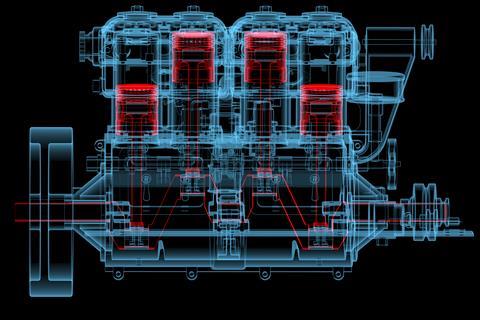The Mission for Ultimate Driving Power: Investigating the Peak of Engine Performance and Technological Breakthroughs in the Automotive Market
In the realm of auto engineering, the pursuit of optimum driving power has been a relentless mission that has unravelled with the development of engine style and the assimilation of sophisticated modern technologies. From the thorough workmanship of burning engines to the fast improvements in electrical propulsion systems, the vehicle market stands at the cusp of a new era characterized by unprecedented performance capabilities.
Evolution of Engine Design

In addition, the combination of turbocharging and supercharging modern technologies has actually transformed engine design by boosting power without significantly boosting engine size. These forced induction systems press the consumption air, enabling even more fuel to be combusted, therefore generating greater power outcome from a smaller sized engine. This advancement has been especially critical in enhancing the performance of smaller displacement engines while keeping gas efficiency standards.

Performance-Enhancing Fuel Technologies
The application of innovative gas technologies has dramatically added to improving engine efficiency in modern-day vehicles. From standard fuel and diesel to cutting-edge biofuels, artificial gas, and hydrogen, the automotive industry is seeing a change in gas options. Biofuels, stemmed from renewable sources like corn, algae, or sugarcane, offer boosted and lowered discharges engine effectiveness. Synthetic fuels, generated via chemical processes, supply high octane rankings, boosting power output. Hydrogen fuel cells, although still in the early phases of fostering, reveal fantastic guarantee because of their zero-emission nature and possibility for high performance. Additionally, fuel ingredients and cleaning agents are being developed to clean engine elements, optimize burning, and decrease rubbing, thus increasing total automobile performance. With continuous r & d, the pursuit for the supreme driving power proceeds, as designers aim to open the complete potential of performance-enhancing gas innovations in the vehicle industry.
Innovations in Electric Propulsion
Significant strides in electrical propulsion technology have revolutionized the auto market, leading the way for a new period of reliable and lasting transportation. Electric lorries (EVs) are gaining appeal because of their ecological advantages and improvements in battery modern technology, allowing longer driving ranges and shorter billing times. Suppliers are investing heavily in r & d to boost the performance of electrical propulsion systems, concentrating on boosting power output, enhancing power efficiency, and lowering general weight.
One significant advancement in electrical propulsion is the advancement of innovative electric motors that deliver greater torque and power thickness, leading to improved velocity and general driving performance. In addition, regenerative stopping systems have been refined to save and record power during slowdown, more enhancing the efficiency of EVs.
Additionally, the assimilation of smart technologies, such as expert system and anticipating analytics, is optimizing the monitoring of electrical propulsion systems, guaranteeing optimal performance their website under numerous driving conditions. These innovations in electric propulsion are reshaping the automobile landscape, driving the sector in the direction of a much more sustainable and energized future.
Impact of Computational Fluid Characteristics
With improvements in electric propulsion pressing the boundaries of vehicle technology, the combination of Computational Fluid Dynamics is playing a pivotal function in maximizing aerodynamic efficiency and boosting general performance in vehicle style. Computational Fluid Characteristics (CFD) involves making use of computer simulations to evaluate the circulation of air around a lorry, allowing designers to forecast exactly how layout modifications will certainly affect the rules of aerodynamics without the requirement for pricey physical prototypes. By properly modeling airflow patterns, CFD permits the refinement of lorry shapes to decrease drag, improve air conditioning, and boost security.
CFD makes it possible for designers to enhance airflow around components such as radiators, engine bays, and wheel wells, adding to boosted efficiency and overall driving experience. In conclusion, the integration of Computational Liquid Characteristics stands for a substantial action onward in the quest for supreme driving power and effectiveness in the auto industry.
Future Trends in Engine Development
In the vibrant landscape of automotive engineering, innovative developments are forming the future trajectory of engine innovation. The future of engine design is noted by a solid focus on performance, sustainability, and performance. Makers are progressively focusing on establishing engines that not only provide high power click over here results yet also prioritize environmental responsibility by boosting and lowering discharges gas effectiveness.
One famous pattern in engine advancement is the rise of electrification. Crossbreed and electric powertrains are acquiring grip as feasible options to typical combustion engines. These modern technologies use the capacity for significant reductions in carbon emissions and raised energy efficiency, lining up with international initiatives to fight climate modification.
In addition, developments in products science and manufacturing methods are making it possible for the production of lighter and much more sturdy engine components. This shift in the direction of light-weight materials such as carbon fiber and light weight aluminum alloys adds to improved check my site efficiency and fuel economy.
Verdict
Finally, the pursuit of ultimate driving power in the vehicle field remains to drive improvements in engine layout, gas technologies, electrical propulsion, and computational fluid dynamics. The evolution of these modern technologies is shaping the future of engine technology, leading the means for extra powerful and efficient vehicles (engines for africa). As the industry remains to press the limits of what is possible, we can expect to see much more groundbreaking developments in the pursuit for peak efficiency
One of the crucial turning points in engine style development is the transition from traditional carbureted engines to modern-day fuel-injected systems. By exactly metering the fuel delivery to each cyndrical tube, fuel-injected engines enhance combustion, resulting in better efficiency and minimized environmental impact.
Furthermore, the assimilation of turbocharging and turbo charging innovations has revolutionized engine design by boosting power without significantly increasing engine dimension (engines for africa).The application of sophisticated fuel technologies has dramatically added to boosting engine performance in contemporary automobiles. In addition, gas ingredients and cleaning agents are being created to clean engine components, enhance combustion, and lower friction, thereby boosting overall car performance